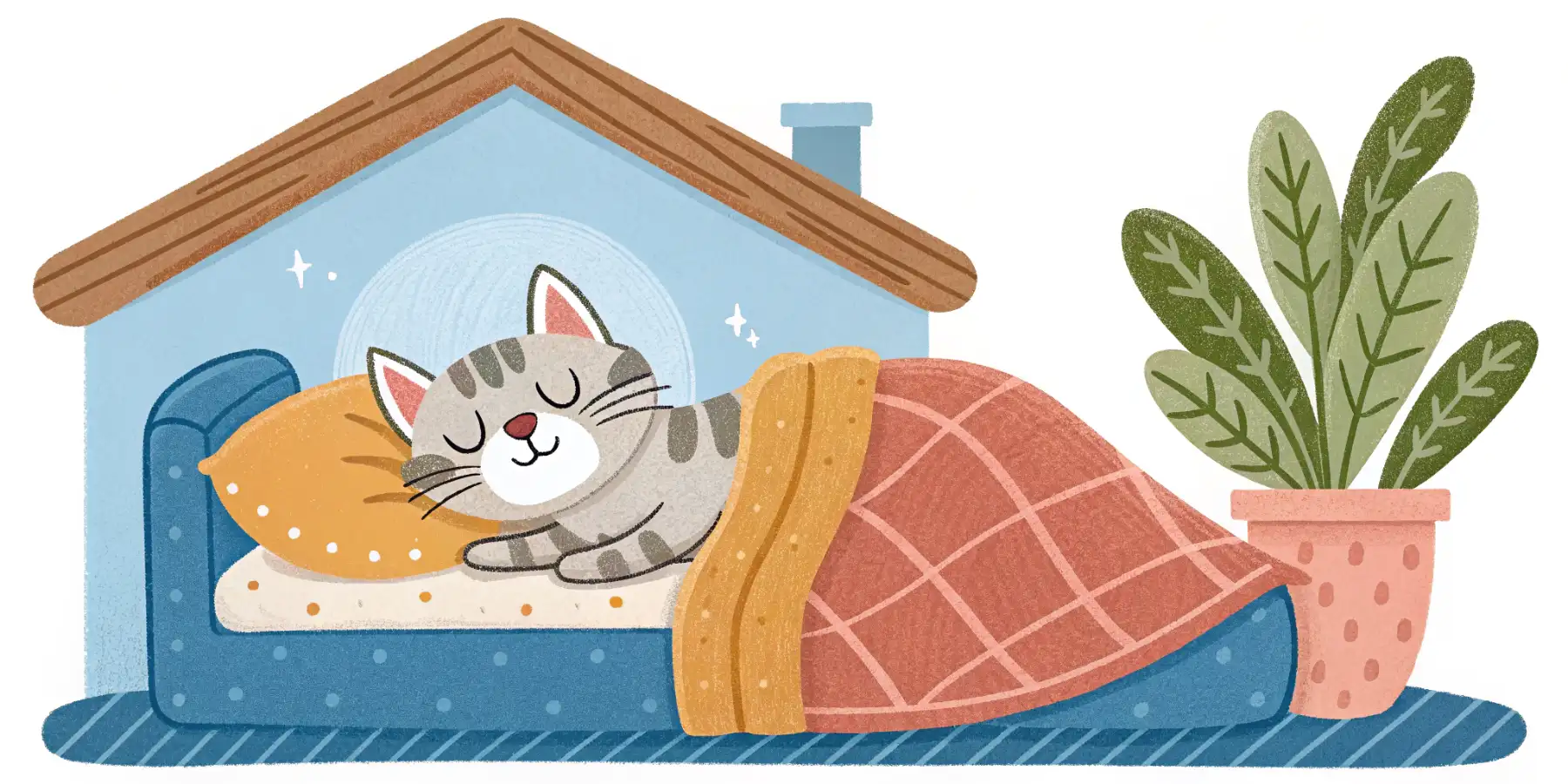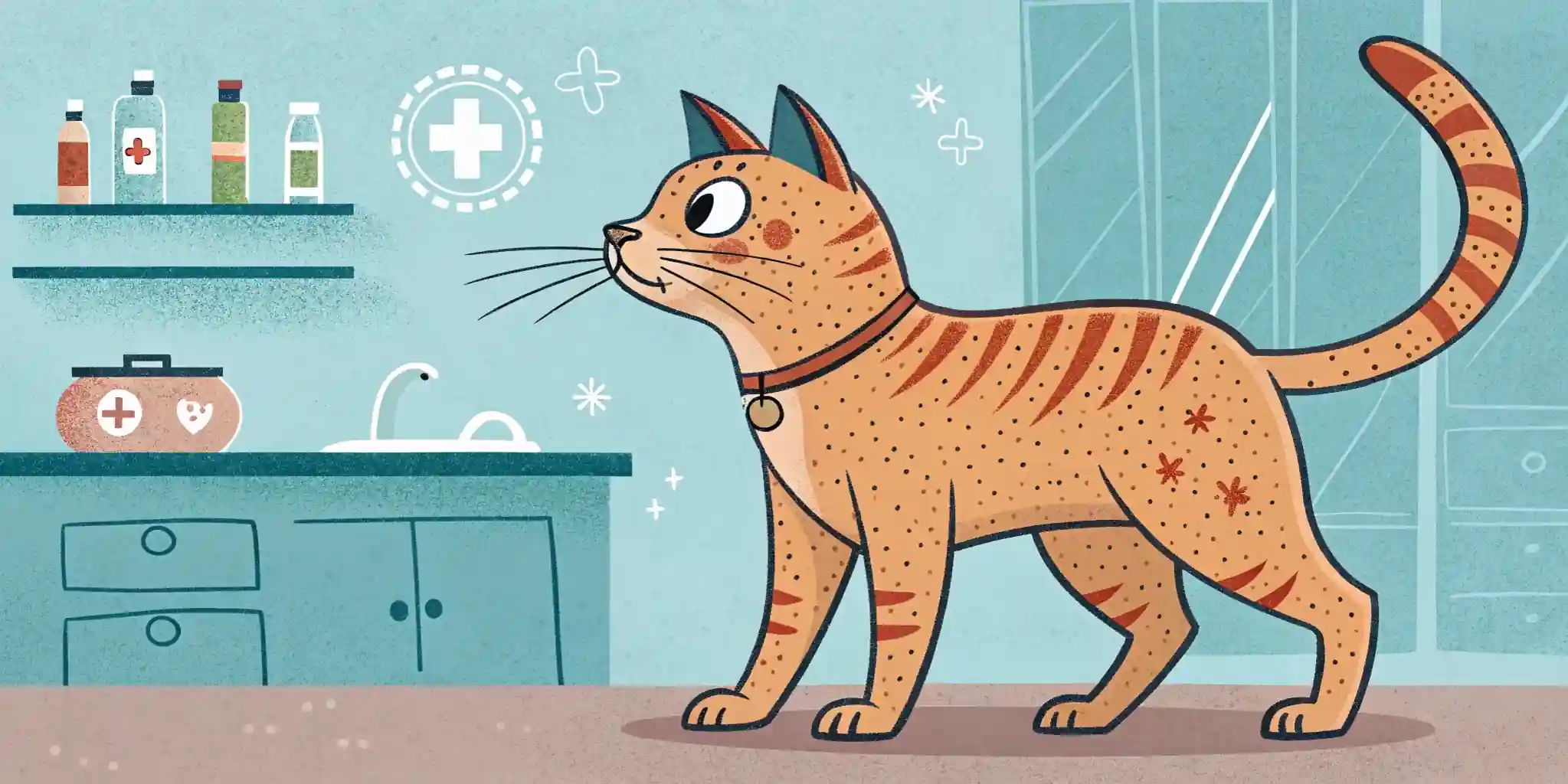
Adult Cat Health: UTIs, Diabetes & Skin Woes
Is your adult cat acting strange? Learn about common cat health issues like UTIs & diabetes, and how to keep your feline happy!
Keeping Your Feline Friend Healthy: Navigating Common Health Issues in Adult Cats
As cat lovers, we all want our furry companions to live long, happy, and healthy lives. While kittens often bring their own set of challenges, adult cats are also susceptible to certain health problems. Being aware of these common issues can help you provide the best possible care and ensure your cat thrives. Today, we’re going to focus on three prevalent conditions: urinary tract infections (UTIs), diabetes, and skin problems.
Urinary Tract Infections (UTIs) in Cats: More Than Just an Inconvenience
UTIs are a fairly common problem in cats, particularly as they age. While bacterial infections can occur, feline idiopathic cystitis (FIC), a non-infectious inflammation of the bladder, is actually a much more frequent culprit. It’s important to understand that “cat UTI” often refers to FIC, especially in younger cats.
What causes FIC? The exact cause is still a topic of ongoing research, but stress, diet, and genetics are all thought to play a role.
Recognizing the Signs of a UTI or FIC:
- Frequent urination: You might notice your cat visiting the litter box more often than usual.
- Straining to urinate: They may spend a long time in the litter box, appearing uncomfortable or even crying.
- Blood in the urine (hematuria): This is a serious sign and warrants immediate veterinary attention.
- Urinating outside the litter box: This can be a sign of discomfort or an attempt to find a more comfortable place to relieve themselves. In my experience, this is often misinterpreted as a behavioral issue when it’s actually a cry for help.
- Excessive grooming of the genital area: This can indicate discomfort or irritation.
What to Do if You Suspect a UTI:
Don’t wait! Schedule an appointment with your veterinarian as soon as possible. They will perform a physical exam and likely run tests such as a urinalysis to determine the cause of the symptoms. Treatment can vary, but may include antibiotics (for bacterial infections), pain medication, and changes to diet and environmental enrichment.
Preventing UTIs and FIC:
- Ensure adequate water intake: Encourage your cat to drink plenty of water. Provide fresh water at all times and consider adding wet food to their diet. Water fountains can also entice cats to drink more. I believe that this is one of the most important, yet often overlooked, aspects of preventative care.
- Reduce stress: Identify and minimize potential stressors in your cat’s environment. This could include changes in the home, new pets, or even noisy neighbors.
- Provide a clean litter box: Keep the litter box clean and accessible.
- Consider a urinary health diet: Your veterinarian may recommend a special diet formulated to support urinary tract health.
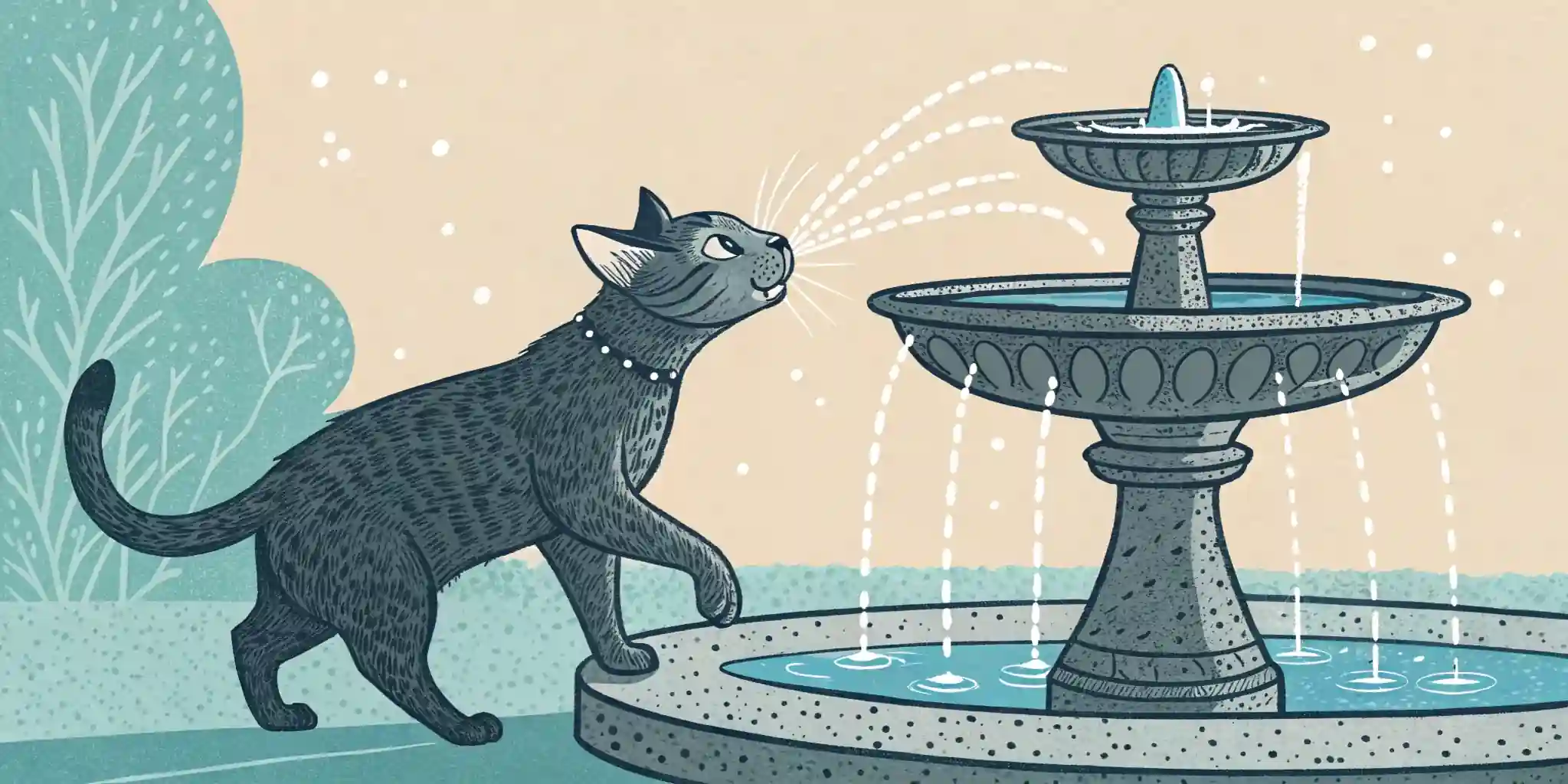 A cat happily drinks fresh water from a pet water fountain, a great way to encourage hydration and prevent urinary issues.
A cat happily drinks fresh water from a pet water fountain, a great way to encourage hydration and prevent urinary issues.
Diabetes in Cats: A Growing Concern
Diabetes mellitus, or simply diabetes, is a metabolic disorder where the body doesn’t produce enough insulin or can’t properly use the insulin it produces. This leads to high blood sugar levels. Diabetes is becoming increasingly common in cats, particularly those who are overweight or obese. Understanding feline diabetes management is crucial for pet owners.
Recognizing the Signs of Diabetes:
- Increased thirst (polydipsia): You might notice your cat drinking significantly more water than usual.
- Increased urination (polyuria): This often goes hand-in-hand with increased thirst.
- Increased appetite (polyphagia): Your cat may seem constantly hungry.
- Weight loss: Despite eating more, your cat may lose weight.
- Lethargy: Your cat may seem tired and less active.
- Weakness in the hind legs: In severe cases, diabetes can lead to nerve damage, causing weakness in the hind legs (diabetic neuropathy).
Diagnosing and Managing Diabetes:
If you notice any of these signs, schedule an appointment with your veterinarian. They will perform a physical exam and run blood and urine tests to diagnose diabetes.
Treatment typically involves:
- Insulin injections: Most diabetic cats require daily insulin injections to regulate their blood sugar levels.
- Dietary changes: A high-protein, low-carbohydrate diet is often recommended to help manage blood sugar levels.
- Regular monitoring: You’ll need to monitor your cat’s blood glucose levels regularly, either at home or at the veterinary clinic.
- Weight management: If your cat is overweight, weight loss is an essential part of managing diabetes.
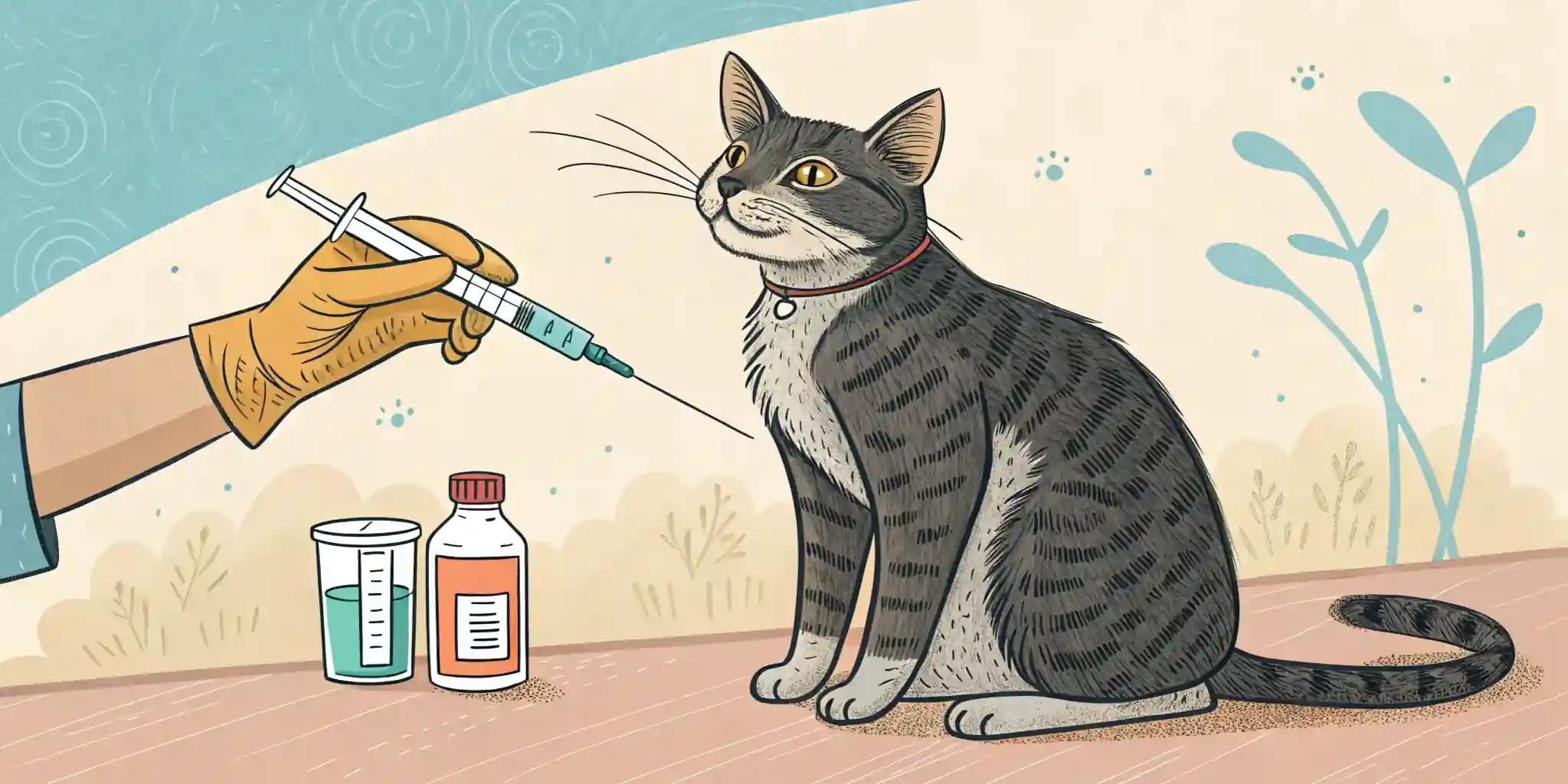 A veterinarian demonstrates how to administer an insulin injection to a cat, a common treatment for feline diabetes.
A veterinarian demonstrates how to administer an insulin injection to a cat, a common treatment for feline diabetes.
The Importance of Early Detection:
Early detection and management of diabetes are crucial to prevent complications and improve your cat’s quality of life. If left untreated, diabetes can lead to serious health problems, such as kidney disease, nerve damage, and even death.
Skin Problems in Cats: Scratching Beneath the Surface
Skin problems are a common reason for veterinary visits in cats. They can be caused by a variety of factors, including allergies, parasites, infections, and stress. Identifying the causes of feline skin allergies is essential for effective treatment.
Common Causes of Skin Problems in Cats:
- Fleas: Flea allergy dermatitis is a very common cause of itching and skin irritation in cats.
- Food allergies: Some cats are allergic to certain ingredients in their food.
- Environmental allergies (atopy): Cats can be allergic to environmental allergens such as pollen, dust mites, and mold.
- Ringworm: A fungal infection that can cause circular, scaly lesions.
- Mites: Mites, such as ear mites and mange mites, can cause intense itching and skin irritation.
- Stress: Stress can exacerbate existing skin conditions or even trigger new ones.
Recognizing the Signs of Skin Problems:
- Excessive scratching: This is often the first sign that something is wrong.
- Licking or biting at the skin: Your cat may obsessively lick or bite at certain areas of their body.
- Hair loss: This can be localized or widespread.
- Redness and inflammation: The skin may appear red and inflamed.
- Scales and crusts: These can indicate an infection or allergic reaction.
- Open sores or lesions: These can be caused by scratching, biting, or infection.
What to Do if You Suspect a Skin Problem:
Schedule an appointment with your veterinarian. They will perform a physical exam and may recommend further testing, such as skin scrapings, allergy testing, or a fungal culture.
Managing Skin Problems:
Treatment will depend on the underlying cause of the skin problem. It may include:
- Flea control: Regular flea prevention is essential.
- Dietary changes: If your cat has a food allergy, your veterinarian may recommend a hypoallergenic diet.
- Medications: Medications such as antihistamines, corticosteroids, or antibiotics may be prescribed to relieve itching, inflammation, or infection.
- Topical treatments: Medicated shampoos, creams, or sprays can help soothe irritated skin.
- Stress management: If stress is a contributing factor, consider ways to reduce stress in your cat’s environment.
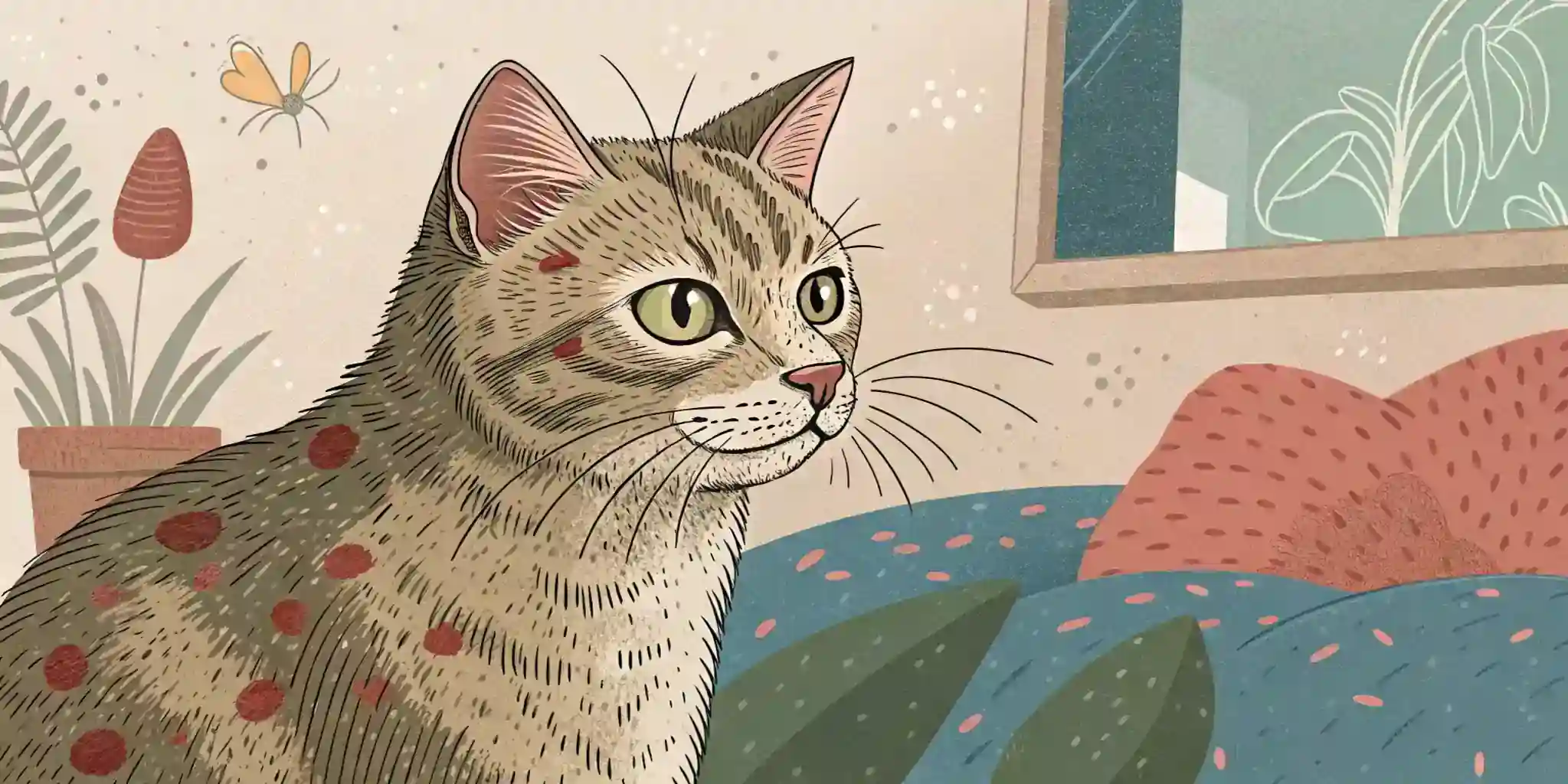 A cat with a visible skin rash, a common symptom of allergies or other skin conditions.
A cat with a visible skin rash, a common symptom of allergies or other skin conditions.
A Note on Self-Grooming:
Cats are naturally meticulous groomers. However, excessive grooming can sometimes be a sign of an underlying skin problem. If you notice your cat grooming excessively, it’s important to consult with your veterinarian to rule out any medical causes.
By being proactive and attentive to your cat’s health, you can help them live a long and fulfilling life, free from the discomfort and complications of these common health issues. Remember to consult with your veterinarian for personalized advice and treatment plans tailored to your cat’s specific needs. It’s always better to be safe than sorry when it comes to your furry friend’s well-being, especially with something like managing chronic skin conditions in senior cats.
